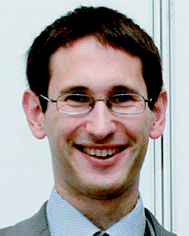Sustained success
The motivation behind the launch of Energy & Environmental Science was to bring together the research communities working towards a more sustainable future, and to become a natural home for research of broad interest and of the highest quality.Operating under the direction and guidance of Editor-in-Chief Professor Nathan Lewis, the Editorial Office and Board have worked hard to fulfil this aim.
As we enter our 4th volume, it is timely to evaluate the progress the journal has made since launch, and look forward to new developments over the year ahead.
A community-spanning journal
The need for research into sustainable energy is more pressing than ever, and scientists from many disciplines around the world continue to rise to the challenges presented.The great strength of Energy & Environmental Science is that the journal spans many communities. We are not solely a chemistry journal, nor an exclusively physics, materials, biotechnology, environmental, engineering or catalysis journal. Acting as a forum bridging all these important fields, we are greater than the sum of our parts.
Our belief is that true progress into more sustainable energy requires collaborative science, technology, and engineering research encompassing many fields. Energy & Environmental Science thus fulfils a very important role as the central home for high quality results, analysis and discourse.
We are very glad that the communities we aspire to serve have so enthusiastically welcomed and endorsed our community-spanning ambitions. This can be seen not just in terms of submissions—at a record high and still rising (Fig 2)—but moreover from the wide subject balance of our published and indeed our most highly-cited articles to date.
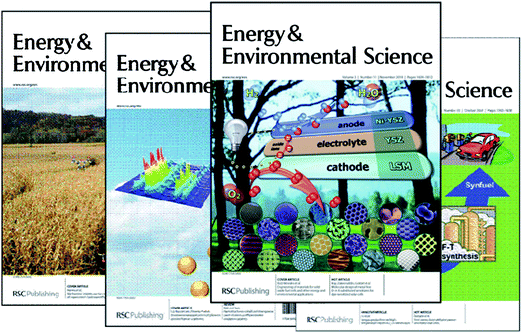 | ||
| Fig. 1 Some of our attractive covers from 2010. | ||
From organic photovoltaics to solar fuels, from biomass conversion to hydrogen storage, from fundamental science in nanostructured materials for electrochemical energy storage to technological perspectives and analyses of the link between energy and the global environment, all is present (Table 1).
| Title | Authors | DOI |
|---|---|---|
| Organic photovoltaics | B. Kippelen, J. L. Bredas | 10.1039/b812502n |
| The current status of hydrogen storage in metal-organic frameworks | D. Zhao, D. Q. Yuan, H. C. Zhou | 10.1039/b808322n |
| Advancing beyond current generation dye-sensitized solar cells | T. W. Hamann et al. | 10.1039/b809672d |
| Thermochemical biofuel production in hydrothermal media | A. A. Peterson, F. Vogel et al. | 10.1039/b810100k |
| Solar water-splitting into H-2 and O-2: design principles of photosystem II and hydrogenases | W. Lubitz, E. J. Reijerse, J. Messinger | 10.1039/b808792j |
| Organic tandem solar cells | T. Ameri, G. Dennler et al. | 10.1039/b817952b |
| New sorbents for hydrogen storage by hydrogen spillover | L. F. Wang, R. T. Yang | 10.1039/b807957a |
| Nanostructured electrode materials for electrochemical energy storage and conversion | A. Manthiram et al. | 10.1039/b811802g |
| Vertically-aligned nanostructures of ZnO for excitonic solar cells | I. Gonzalez-Valls, M. Lira-Cantu | 10.1039/b811536b |
| Bulk nanostructured thermoelectric materials: current research and future prospects | A. J. Minnich, M. S. Dresselhaus, Z. F. Ren, et al. | 10.1039/b822664b |
| Biofuels: a technological perspective | R. Luque et al. | 10.1039/b807094f |
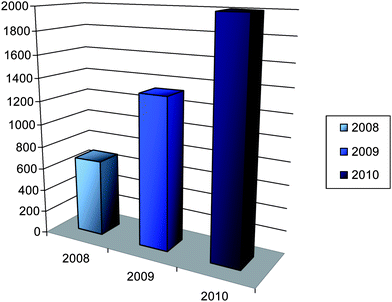 | ||
| Fig. 2 Pages published in the journal since launch. | ||
In view of our wide readership, each article in the journal continues to be accompanied by a brief distinctive “broader context” section, highlighting the importance of the research and allowing the entire readership to appreciate its significance.
A further unique feature is our range of article types, including quantitative Analysis articles, and lively, sometimes provocative yet rigorously-argued Opinions by leaders in the field. See for example the recently-published Opinion on “Fast Food Energy” by Professor Dan Nocera (DOI: 10.1039/c003891c).
Commitment to quality
Above all, Energy & Environmental Science remains a journal committed to publishing the most insightful, very high-quality science of significant general interest to our wide international readership. By managing a rigorous, fair and efficient peer-review system we maintain our consistent high standards.This is perhaps highlighted by our recently-released stunning first Impact Factor of 8.50, officially ranking Energy & Environmental Science as #1 of 181 journals in its ISI subject category.
This magnificent news underlines the wonderful start the journal has enjoyed. Our commitment to quality will continue in the months and years ahead.
Our Facebook site is not just a home for our latest news; it acts as a forum where the entire community can share ideas and debate their opinions on the latest developments in energy research. As well as highlighting articles from Energy & Environmental Science, we also feature breakthrough papers from other leading journals, post videos and lectures, and share information on new policies and upcoming conferences—we cover everything you need to know about energy! We hope you will get involved and share your ideas and opinions with this dynamic community by joining our online network today.
International approach
In an exciting new move, Energy & Environmental Science is organising a conference in Dalian, China from 10–13 April. Chaired by Advisory Board Member Professor Xinhe Bao, the 1stInternational Conference on Clean Energy promises to be an exceptional meeting. Further details, including the list of world class plenary speakers, are available at: www.icce.cas.cn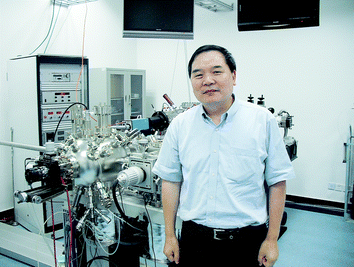 | ||
| Fig. 3 Prof Xinhe Bao, EES Advisory Board member and Chair of the 1stInternational Conference on Clean Energy. | ||
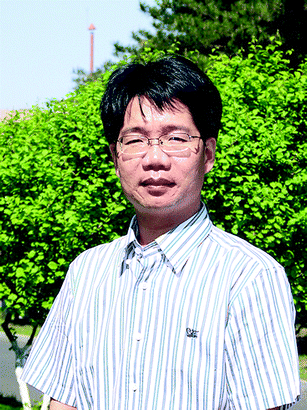 | ||
| Fig. 4 New Editorial Board member Professor Peng Wang. | ||
Energy & Environmental Science has broad international support, and we are delighted to have published many important papers from Chinese authors. I am pleased to announce that Professor Peng Wang (Changchun Institute of Applied Chemistry) will be joining the Editorial Board, and we look forward to working closely with him.
Looking to the future
Indeed, on behalf of Editor-in-Chief Nathan Lewis I would like to thank all members of our Editorial and Advisory Boards, and more generally our authors, referees, and readers for your continued support. This has laid the foundations for future success, and we very much hope you will continue to help us build on our recent achievements.Huge challenges still remain with the development of more sustainable energy, and in the mitigation of related environmental impacts. We feel Energy & Environmental Science is very well placed to be at the forefront of research addressing these challenges. Feedback and suggestions for the journal are always welcome—do please contact the Editorial Office at any time with your ideas.
With best wishes for the New Year,
Philip Earis
Managing Editor
E-mail: ees-rsc@rsc.org
News from RSC Publishing
Quality and growth continues
It's quality that really matters at RSC Publishing. And the 2009 Journal Citation Reports® proved that our quality is better than ever as our average impact factor (IF) rose from 4.9 to 5.4. It's an impressive figure, especially when compared with the average for a chemistry journal of 2.4.But we don't rely on just one or two titles to boost our average. It's our entire collection that counts: of the top 20 journals in the multidisciplinary chemistry category, 25% are from RSC Publishing; and 90% of our titles have an IF over 3.
Our list of titles continues to grow: Food & Function and Catalysis Science & Technology are the latest titles to join our expanding portfolio. Plus, the number of articles we've published has increased by 74% in the last 2 years alone. We remain committed to providing a world-class publishing service to our authors, and delivering cutting-edge chemical science to readers throughout the world.
The IF and article growth figures provide a clear indication that more researchers than ever before are recognising journals from the RSC as a key resource to access the very best research.
2011 books
With steady front-list growth and cutting-edge content, delivering excellence and authority, the RSC is one of the world's leading chemical science print and online book publishers.Nearly 1000 eBooks equating one-third of a million pages, the RSC eBook Collection delivers outstanding online research and opinion in a multitude of areas of the chemical sciences. Nine new RSC eBook Subject Collections offer additional flexibility.
With over 90 new print titles planned for 2011, including second editions of seminal texts and new RSC Polymer Chemistry and RSC Metallobiology series launching, our contribution to chemistry collections worldwide is diverse, topical and high impact. Expect another first class collection of best selling chemical science titles in 2011.
NEW RSC publishing platform
Access one million journal articles and book chapters in one simple integrated search.The new RSC Publishing Platform has been developed in consultation with the international scientific and librarian community. Together we have identified the best and most valued interface and features that connect you with the highest quality scientific research. With one single search box, easily access our books, journals and databases for students, academics, researchers, scientists and professionals.
ChemSpider
Have you heard about the RSC's award winning chemical structure and text based search engine—ChemSpider? It's FREE!ChemSpider provides access to:
• millions of chemical structures;
• an abundance of additional property information;
• tools to upload, curate and use the data;
• a multitude of other online services like the RSC Publishing Platform.
ChemSpider is one of the richest single sources of structure-based chemistry information.
Visit www.chemspider.com (for mobile devices: cs.m.chemspider.com)
RSC 2011 Conferences and events
As a learned society, the RSC hosts more than 300 international conferences and events, and the following have been outlined as areas you may find of interest. Visit www.rsc.org/ConferencesAndEvents to view the complete schedule of events for 2011.• 1st International Conference on Clean Energy
• Dalian, China, 10–13 April
• Faraday Discussion 151: Hydrogen Storage Materials
• Oxon, UK, 18–20 April
• Challenges in Renewable Energy (ISACS4)
• Boston, USA, 5–8 July
• Faraday Discussion 154: Ionic Liquids
• Belfast, UK, 22–24 August
• Faraday Discussion 155: Artificial Photosynthesis
• Edinburgh, UK, 5–7 September
Footnotes |
| † Energy & Environmental Science official Facebook page: www.facebook.com/pages/Energy-Environmental-Science/24375018213?v=wall |
| ‡ Energy & Environmental Science official Twitter feed: twitter.com/EES_journal. |
| This journal is © The Royal Society of Chemistry 2011 |

